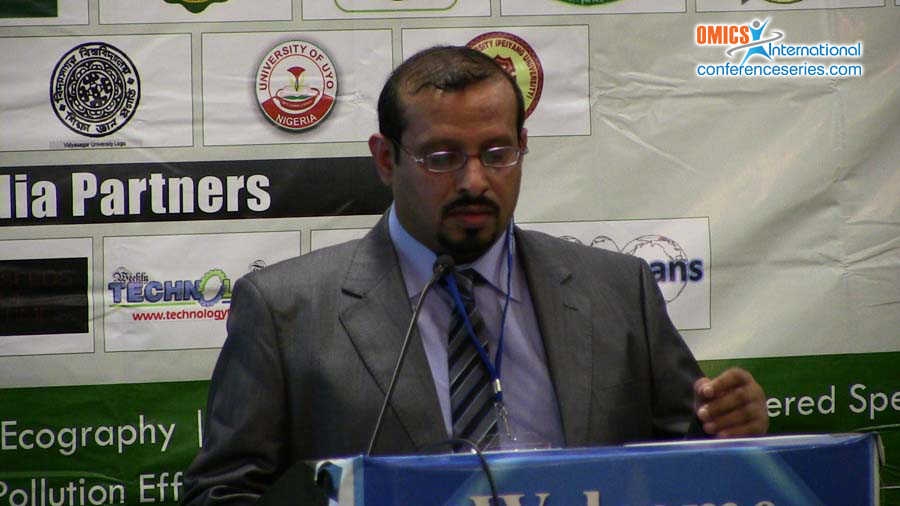
Saad Al-Shahrani
North Jeddah King Abdulaziz University, Saudi Arabia
Title: Removal of copper (Cu (II)) and zinc (Zn(II)) from wastewater using Saudi activated bentonite
Biography
Biography: Saad Al-Shahrani
Abstract
Application of Saudi activated clay (bentonite) to remove copper and zinc from wastewater was investigated. Natural local clay which was obtained from Khulays bentonite deposit was selected and activated using sulfuric acid to increase its adsorptive capacity. The removal characteristics of copper and zinc ions from wastewater were investigated under various operating variables such as shaking time, solution pH, clay amount, initial metal concentration and counter ions. Batch scale experiments were carried out for a wide range of initial metals concentration. The results showed that the sorption of copper and zinc ions on Saudi activated clay was relatively fast and the equilibrium was achieved after only 20 min. The sorption data suggests that solution pH was the most important parameter in controlling copper and zinc sorption onto bentonite. They also showed that increasing the initial metal concentration decreased metal removal percentage due to the saturation of clay with metal ions. Furthermore, the adsorption of copper and zinc ions increase with increase in solution pH. The adsorption isotherm data were well fitted with the linearized Langmuir, Freundlich and Dubinin–Radushkevich (D–R) models. The maximum adsorption (qmax) for copper and zinc on Saudi activated bentonite equals to 5.26 and 3.4 mg/g respectively. Copper and zinc adsorption onto Saudi activated bentonite was well represented by the pseudo-second-order kinetic model. Saudi activated bentonite can be considered as a promising adsorbent for the removal of heavy metals from wastewater.



